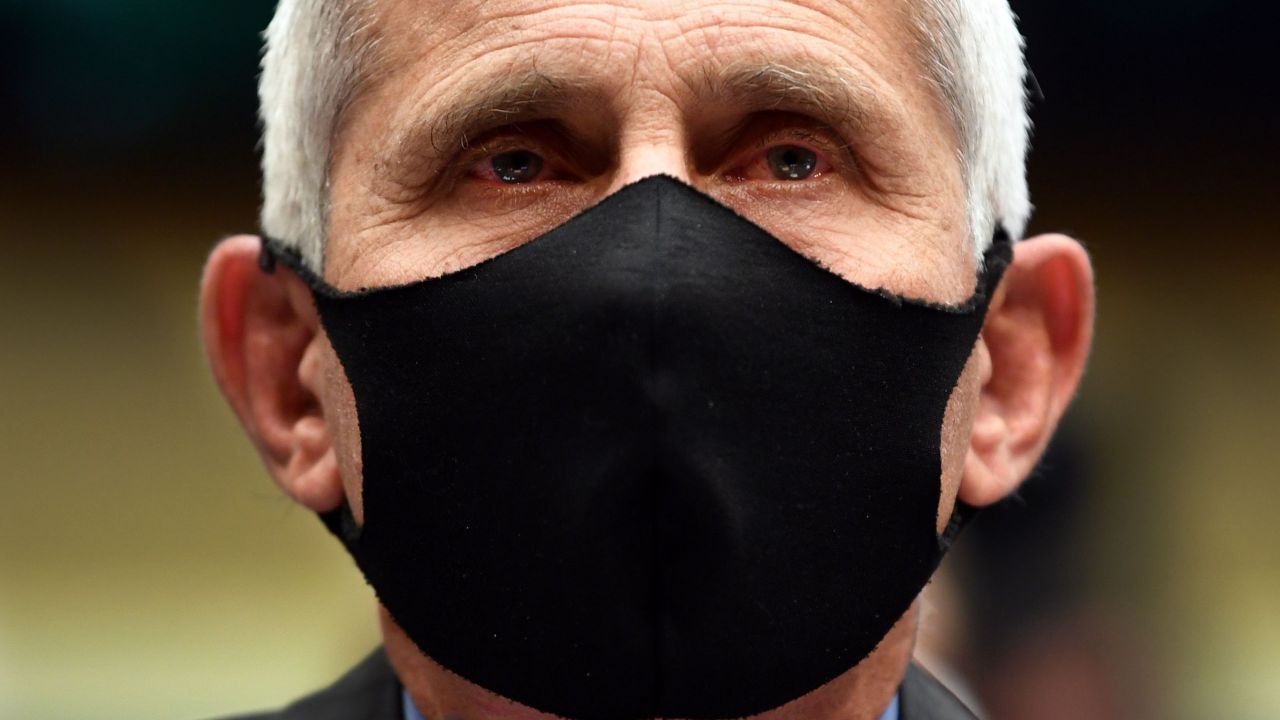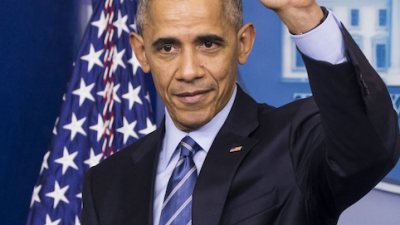
Director of the National Institute for Allergy and Infectious Diseases Dr. Anthony Fauci testifies during a House Committee on Energy and Commerce hearing on the Trump Administration's Response to the COVID-19 Pandemic, on Capitol Hill in Washington, DC on Tuesday, June 23, 2020. (Photo by KEVIN DIETSCH / POOL / AFP) (Photo by KEVIN DIETSCH/POOL/AFP via Getty Images)
Donald Trump has targeted a new pandemic villain: Dr. Anthony Fauci. Among his transgressions, the nation’s leading infectious disease physician relied on facts and science to contradict Trump’s talking points and criticize his policies. Even worse, he has outperformed Trump in public opinion polls.
So rather than declare war on a coronavirus outbreak that he has mismanaged at every turn, Trump has attacked Dr. Fauci and the truth.
Round 1: Trump vs. Dr. Fauci on Hydroxychloroquine
Mar. 19: Despite the absence of scientific evidence proving its safety or effectiveness, Trump touts hydroxychloroquine as a cure for COVID-19.
Mar. 20: At a White House Coronavirus Task Force briefing, a reporter asks Dr. Fauci if hydroxychloroquine is effective in treating the virus. “The answer is no,” he says, “and the evidence that you’re talking about…is anecdotal evidence.” A month later, the FDA cautions against using the drug because of dangerous and potentially fatal side effects. On June 15, the FDA revokes its temporary emergency use authorization as a COVID-19 treatment.
Mar. 21-Apr. 1: Dr. Fauci becomes what Politico calls a “fringe MAGA target” and by April 1 is receiving federal security protection.
Apr. 5: At a press briefing, Trump again touts hydroxychloroquine, repeatedly saying, “What do you have to lose?” When a reporter asks Dr. Fauci about the dangers of using the drug, Trump interrupts and refuses to let him answer.
Dr. Fauci’s COVID-19 approval rating
Overall: 78 percent
Republicans: 77 percent
Democrats: 81 percent
Independents: 79 percent
Trump’s COVID-19 approval rating: 46 percent
Round 2: Trump vs. Dr. Fauci on Reopening
Apr. 11-12: Trump spends much of Easter weekend on the phone asking informal advisers, “What do you think of Fauci?” Trump say that he has made Dr. Fauci a “star” by placing him at the center of the administration’s public response to COVID-19, including daily press briefings.
Apr. 12: Appearing on CNN’s State of the Union, Dr. Fauci says that a stronger early response by the Trump administration could have saved lives. Later that evening, Trump shares a tweet that includes this hashtag: #FireFauci.
Apr. 16-17: After threatening to force states to reopen before they have satisfied CDC guidelines for doing so safely, Trump tells governors that it’s their decision. The next day, Trump tweets, “LIBERATE MINNESOTA!”, “LIBERATE MICHIGAN!” and “LIBERATE VIRGINIA” — all states planning not to reopen anytime soon.
Apr. 27: The White House Coronavirus Task Force holds its last public briefing for two months. When the next briefing occurs on June 26, Trump is not present.
Also at the end of April: WH Chief of Staff Mark Meadows starts banning Dr. Fauci from most television appearances.
May 8: Trump repeats what he has been saying regularly since February — that the virus would just “go away.”
May 11: Trump declares victory over COVID-19 and again urges states to reopen.
May 12: Appearing before the Senate, Dr. Fauci testifies to “really serious” consequences if states reopen businesses and schools too early. He warns that COVID-19 will not simply “disappear” and a second wave is “entirely conceivable and possible.” Sen. Rand Paul (R-KY) attacks Dr. Fauci, saying, “I don’t think you’re the end-all. I don’t think you’re the one person that gets to make a decision.”
Also on May 12: Fox News’ Tucker Carlson blasts Dr. Fauci as “the chief buffoon of the professional class.”
Mid-May: Trump stops receiving personal briefings from Dr. Fauci.
Dr. Fauci’s COVID-19 approval rating:
Overall: 68 percent (down from 78 percent in April)
Republicans: 51 percent (down from 77 percent)
Democrats: 86 percent (up from 81 percent)
Independents: 66 percent (down from 79 percent)
Trump’s COVID-19 approval rating: 41 percent
Round 3: Trump vs. Dr. Fauci — and the Horse He Rode In On
From early June to July 15: Trump does not speak with Dr. Fauci at all.
June 23: At a House hearing, Rep. David McKinley (R-WVA) asks Dr. Fauci if he regrets not advising the public more forcefully to wear masks earlier. “I don’t regret that because let me explain to you what happened,” Dr. Fauci answers. “At that time, there was a paucity of equipment that our healthcare providers needed, who put themselves daily in harm’s way of taking care of people who are ill. We did not want to divert masks and PPE away from them to be used by the people.”
July 12: A White House official releases a statement to several news outlets saying that “several White House officials are concerned about the number of times Dr. Fauci has been wrong on things.” It includes a lengthy list of Dr. Fauci’s comments from early in the outbreak and is presented in the style of a campaign’s opposition research document.
July 14: During a Fox News interview, Trump says, “[T]he same people that say wear a mask are people that said, a long time ago, don’t wear a mask, masks are bad. They said they’re not good. So, you know, like Dr. Fauci, surgeon general, a lot of people — a lot of people…”
July 14-15: In a USA Today op-ed that Trump reportedly authorized and encouraged (though the administration denied it), White House trade adviser Peter Navarro writes that Dr. Fauci “has been wrong on everything I have interacted with him on.” The next day, USA Today adds a note to the online version of the op-ed, noting that several of his claims “were misleading or lacked context. As such, Navarro’s op-ed did not meet USA TODAY’s fact-checking standards.”
July 15: Asked about Navarro’s op-ed, Trump says, “He made a statement representing himself. He shouldn’t be doing that.”
Also on July 15: Stephen Moore, a member of Trump’s task force on reopening the economy, tells USA Today that Moore and his team are preparing a memo that highlights Dr. Fauci’s record, claiming that he has been wrong in predicting the course of pandemics. “It’s time for him to go away,” Moore says.
Also on July 15: In a series of interviews with The Atlantic, Dr. Fauci describes the intensifying effort to discredit him as “bizarre.” “I cannot figure out in my wildest dreams why they would want to do that.”
Voters who trust Dr. Fauci’s COVID-19 information
Overall: 65 percent (compared to 78 percent approval in April)
Republicans: 39 percent (compared to 77 percent approval in April)
Democrats: 86 percent (compared to 81 percent approval in April)
Independents: 67 percent (compared to 79 percent approval in April)
Voters who trust Trump’s COVID-19 information:
Overall: 30 percent
Republicans: 71 percent
Democrats: 4 percent
Independents: 27 percent
July 17: In a Fox News interview airing on July 19, Trump calls Dr. Fauci “a little bit of an alarmist.” Trump also repeats the misleading claim that Dr. Fauci had opposed the public’s use of face masks before recommending them on April 3, omitting Dr. Fauci’s reasons: Widespread public demand for face masks would have diverted the limited supply of medical-grade masks away from hospital workers and first responders treating infected patients.
No Split Decision: The Longer Trump Wins, the More America Loses
So far, Trump is still losing his credibility war against Dr. Fauci. But as with past targets, Trump’s politicization playbook is working with some people. On April 8, Dr. Fauci’s overall approval rating was 78 percent. Today, only 65 percent trust him. However, the shift has been almost entirely among Republicans (77 percent approval in April down to only 39 percent who trust Dr. Fauci now) and, to a lesser extent, Independents (79 percent approval in April down to 67 percent who trust him today).
The pandemic, on the other hand, doesn’t respond to Trump’s talking points. On April 8, there were “only” 430,000 COVID-19 infections in the US and 15,000 deaths. Today almost four million infections in the US have resulted in more than 140,000 deaths. Based on current projections, more than 224,000 Americans will have died from the virus by November 1.
Millions remain out of work and the economy is in shambles. Banned from traveling to Europe, Canada and most of the world, where leaders have controlled the virus by following the very recommendations that Dr. Fauci is still urging, Americans have become international pariahs.
As Trump’s rhetoric persuades too many Americans to push back against masks, social distancing and necessary closings, infections surge to new heights. Hospitals are once again running out of ICU beds and personal protective equipment. Testing backlogs are once again delaying results for so long that they become useless in contact tracing and containment efforts. And saddest of all, refrigerated vans are once again serving as temporary morgues in communities where sickness and death are overwhelming.
In his war against Dr. Fauci, time is not on Trump’s side. Back on April 8, only 29 percent of respondents to Quinnipiac University’s poll had been infected with COVID-19 or knew someone personally who had. By July 15, that number had soared to 53 percent. Harsh reality is en route to many of Dr. Fauci’s new skeptics. When it hits closer to home, maybe they will trust him again. Perhaps they will heed his new warnings, follow his recommendations and become part of the COVID-19 solution.
“[A] risk for you is not just isolated to you.…[Y]ou have an individual responsibility to yourself. But you have a societal responsibility.…[T]his is part of a process that we can be either part of the solution or part of the problem.”
– Dr. Anthony Fauci, June 26, 2020





